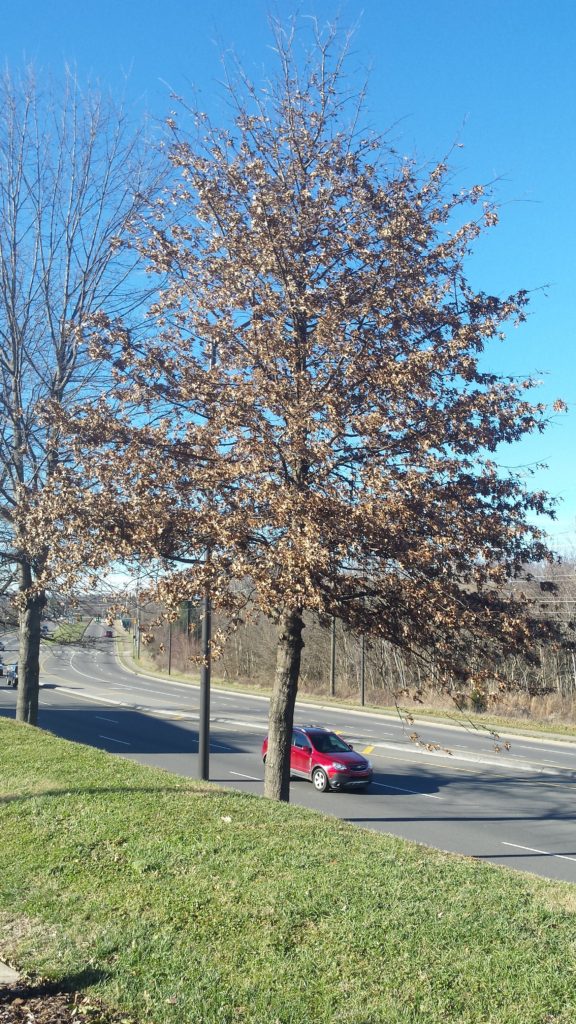Through the fall and winter seasons, certain landscape and woodland trees retain their dead brown leaves on branches. Beech (Fagus spp.) and oak (Quercus spp.) are two common examples. Winter winds and precipitation will eventually force leaves to drop. Plant scientists term the retention of leaves as “marcescence”. There are many theories as to why this phenomena occurs.

True, most deciduous landscape trees shed their leaves in autumn. Cellular, physiological, and environmental changes are key factors. Growth regulator changes occur at the leaf abscission layer (the base of the leaf stalk or petiole. This process results in falling leaves. However, some hardwood trees retain their leaves throughout most of the winter season. For some gardeners, leaf retention is wonderful, but a few dislike having to rake leaves in the fall and again in early spring.
One is the first trees to evolve on planet Earth were evergreens such as (pines (Pinus), spruces (Picea), hemlocks (Tsuga), and firs (Abies). Other deciduous conifers such as bald cypress (Taxodium), dawn redwood (Metasequoia), and ginkgo (Ginkgo) soon followed. These trees encountered thousands of years of changing environmental and growing conditions. Next on the ecological chart were the broad-leafed hardwood trees which developed new ways of shedding their leaves. Short-lived trees like birch (Betula), maple (Acer), cherry (Prunus), and aspen (Populus) came next.

Beeches (Fagus) and oaks (Quercus) seemed to find a middle ground between evergreen and deciduous. Their leaves died, but did not drop in the fall. Evergreen and marcescent species increased their photosynthetic time and reduced nutrient losses by holding their leaves.
Young or newly planted trees often hold their leaves later into autumn. Once they become established in 1-3 years, leaf drop occurs at normal times, usually 3-4 weeks earlier. Marcescent foliage is also considered a deterrent to twig browsing by large four legged herbivores like deer and moose.

 Posted in
Posted in 
